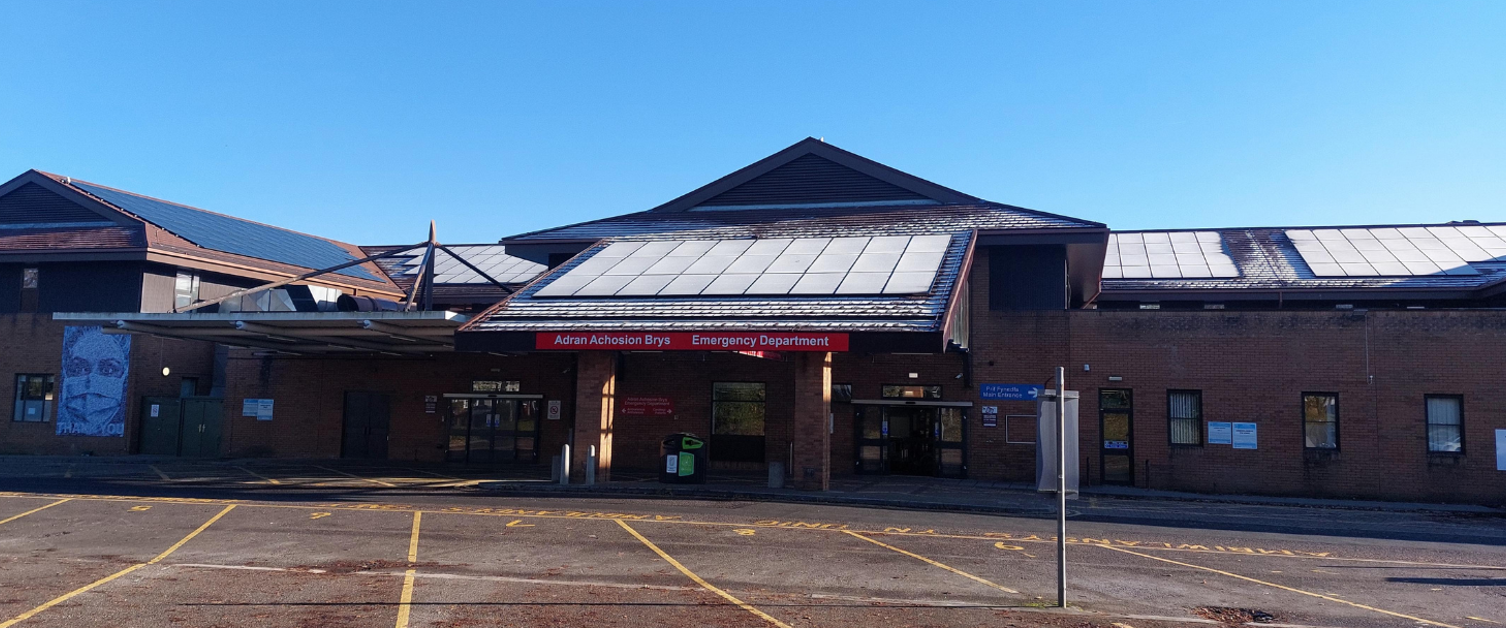Latest update - Completion of roof replacement work at Princess of Wales Hospital

Returning to Princess of Wales Hospital
Work to replace the roof of the original building at Princess of Wales Hospital has been completed, within the timeframe outlined at the start of the process. We have completed this work in just 12 months with £30m being invested in the site. We extend a huge thank you to everyone in our communities for your patience as we have worked through this unprecedented time.
Alongside work to replace the roof, we have taken the opportunity to make other significant investments in the site.
Find out more in our updated FAQs below.
FAQ Last Updated - 10/10/25
- Is the work to replace the roof at Princess of Wales Hospital complete?
-
Yes, the work to replace the roof of the original building has been completed, within the timeframe outlined at the start of the process. We have completed this work in just 12 months with £30m being invested in the site.
Alongside this work we have taken the opportunity to make other significant investments in the site. As well as a full roof replacement we have upgraded our facilities. Including:
- Major upgrade to main theatre suite
- Refurbished wards – including cardiology
- Installation of new windows to improve efficiency and patient comfort
- Refurbished Intensive Care Unit
- Three dedicated theatres and a 28 bed ward for orthopaedics
- Increased Ophthalmology capacity
- Investment in upgraded in-ward provision to enable the delivery of critical care
- Solar PV on hospital roof
- Why is there still work ongoing on site?
-
We continue to invest in the estate at POW. We are carrying out essential maintenance work on the parts of the roof which were not covered by the roof replacement work. This includes cleaning and repair work.
We are undertaking fire compartmentation work and we have updated electrical and ventilation systems.
We will also soon be refurbishing our HSDU (our unit for sterilising surgical equipment) – replacing air handling units, ceiling, flooring and some equipment. This is an investment of £600k. During this work this service will be provided for POW from our other two acute sites.
Any empty wards now remaining on site, provide an essential decant space as we progress at pace with our upgrading of the site in the next two years.
- Will all departments closed or moved during the roof replacement be returned to the hospital?
-
We are taking this opportunity to review our services and where possible do things better and more effectively.
The majority of services have now returned to the hospital. Moves back to the site started early in the year with the return of ophthalmology and maternity and neonatal services. The final ward moves happened at the end of September 2025.
Main theatres, endoscopy and the eye unit have reopened.
Trauma services for CTM remain centralised at Royal Glamorgan Hospital and will be reviewed in 2026.
Stroke services for the whole of CTM continue to be temporarily relocated at Royal Glamorgan Hospital.
Acute care of the elderly services remain at POW. Patients who no longer need acute care but require some medical input before they return home, are now cared for in a dedicated community setting at Ysbyty George Thomas.
- What has changed about the services we deliver at the hospital?
-
The unprecedented set of circumstances brought about by last year’s Critical Incident have allowed us to make changes to improve and future proof services at POW.
These include:
1. Centre of Excellence for Orthopedics – all elective orthopaedic surgery within the health board has been centralised at POW’s new Centre of Excellence. The hospital is now home to three dedicated theatres and a ward of 28 beds for in patient elective surgery.
This means that, at full capacity, we will be able to carry out 60 inpatient elective orthopaedic operations on site each week – with day cases being undertaken across all three acute hospital sites.
2. Centre of Excellence for Ophthalmology - all cataract surgery within the health board has been centralised at POW. Facilities include two dedicated eye theatres, and a surgicube which provides a surgical environment in which cataract procedures can take place. During this September alone, we conducted 216 cataract operations at POW.
3. Work on the roof enabled us to install a Solar PV system which is now helping to provide green power for the site.